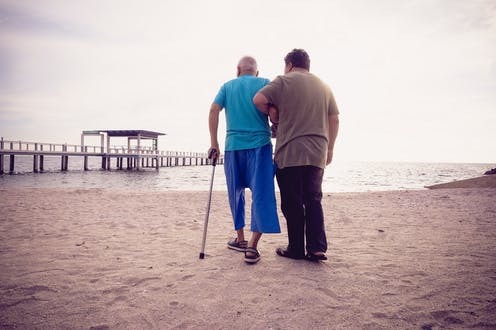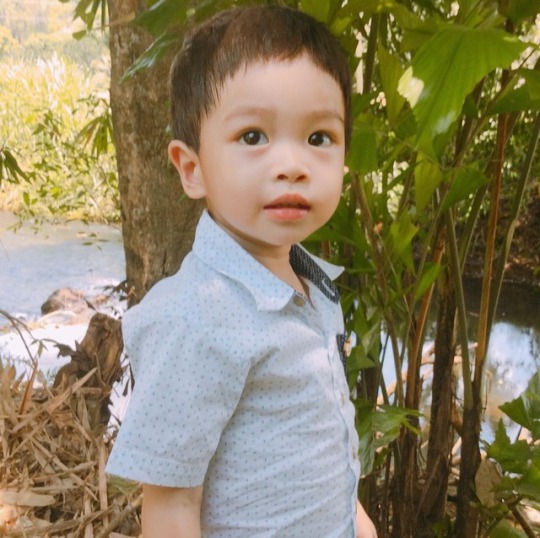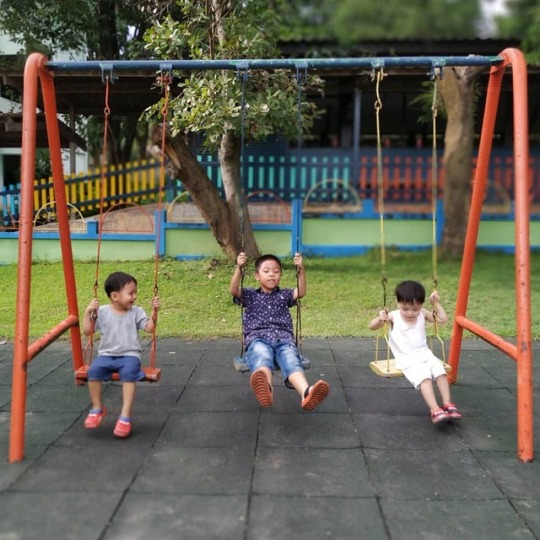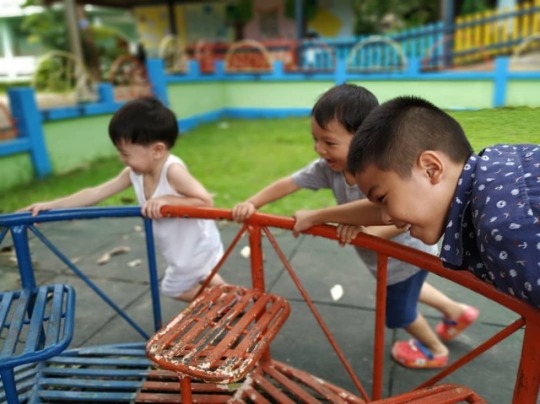#tonkid
Explore tagged Tumblr posts
Text
Blasting plastic with powerful lasers turns it into tiny diamonds
https://sciencespies.com/physics/blasting-plastic-with-powerful-lasers-turns-it-into-tiny-diamonds/
Blasting plastic with powerful lasers turns it into tiny diamonds
Simple plastics can be turned into tiny diamonds with a pulse of laser light, and a similar process may occur inside giant planets, which could explain some of their mysteries
Physics 2 September 2022
By Leah Crane
Small diamonds can be created with a powerful laser blast
Shutterstock/tonkid
Blasting plastic with powerful lasers can create tiny diamonds. Similar processes may occur at the high temperatures and pressures found within planets, which could help explain why Uranus and Neptune are so strange.
Researchers have been able to create nanodiamonds before by shining lasers at a mixture of carbon and hydrogen, but it required extraordinarily high pressures. Siegfried Glenzer at SLAC National Accelerator Laboratory in California and his colleagues found that by using a simple plastic called PET – commonly used to make bottles and other containers – which contains carbon, hydrogen and oxygen, they could make diamonds in much less extreme conditions.
When they fired a powerful laser at the plastic, it heated up to temperatures between 3200°C and 5800°C and the shock waves generated by the laser pulse brought the plastic to pressures upwards of 72 gigapascals – equal to one-fifth the pressure in Earth’s core. This separated the hydrogen and oxygen from the carbon, leaving behind tiny diamonds a few nanometres across and a form of water called superionic water, which conducts electricity more easily than regular water.
Advertisement
This happened at lower pressures than in previous experiments using other materials, says Glenzer, and like PET, the interiors of giant planets contain oxygen as well as carbon and hydrogen.
“What that means is that diamonds are probably everywhere,” says Glenzer. “If it happens at lower pressures than previously seen, it means they’re inside Uranus, inside Neptune, inside some moons such as Titan, which contain hydrocarbons.”
Such diamonds forming in Neptune’s mantle and then sinking towards its core, generating friction and heat in the process, could explain why the planet is unexpectedly hot. And within Uranus, pockets of superionic water left over from diamond formation could be conducting electric currents, which might have something to do with the strange shape of its magnetic field.
One next step is to include this process in models of those worlds and see if it can account for some of their many mysteries, says Glenzer. Another is to collect the nanodiamonds after they form. Similar materials are already used in industrial abrasive processes and could be useful in many scientific applications, but are generally produced by detonating explosives.
“In the other experiments, where the necessary pressure was much higher, the conditions were so extreme and dynamic that the diamonds ended up falling apart,” says Glenzer. “Now that we’ve found a way to make the diamonds at lower pressure, we may have a chance to actually harvest the diamonds.”
Journal reference: Science Advances, DOI: 10.1126/sciadv.abo0617
More on these topics:
#Physics
#2022 Science News#9-2022 Science News#acts of science#Earth Environment#earth science#Environment and Nature#everyday items#Nature Science#New#News Science Spies#Our Nature#planetary science#production line#sci_evergreen1#Science#Science Channel#science documentary#Science News#Science Spies#Science Spies News#September 2022 Science News#Space Physics & Nature#Space Science#Physics
1 note
·
View note
Text
The ten factors linked to increased risk of Alzheimer's disease
The ten factors linked to increased risk of Alzheimer’s disease
The ten factors linked to increased risk of Alzheimer’s disease


Many of these risk factors are preventable. tonkid/ Shutterstock
Although there’s still no cure, researchers are continuing to develop a better understanding of what increases a person’s risk of developing Alzheimer’s disease. A recent studythat looked at 396 studies has even been able to identify ten risk factors that are shown…
View On WordPress
0 notes
Text
The two obstacles that are holding back Alzheimer's research
http://bit.ly/2A0NGqS
youtube
Family members often become primary caregivers for loved ones with Alzheimer's disease. tonkid/Shutterstock.com
Thirty years ago, scientists began to unlock the mysteries regarding the cause of Alzheimer’s disease. This knowledge ushered in an era of great enthusiasm that scientists could develop new therapies to either prevent Alzheimer’s or significantly slow the symptoms once present.
Despite continued progress and renewed hope that some therapies now in human trials will modify the course of the disease, the initial optimism of neuroscientists like me has been significantly tempered by reality. Numerous therapies, most with sound scientific basis, have been tested and shown to be ineffective in humans with symptomatic Alzheimer’s disease.
Like the war on cancer, the war on Alzheimer’s disease is not going to be won in a single glorious “battle.” Instead, I believe incremental yet transformative progress will eventually lead to success. Unlike cancer, the scientific community does not yet have any “survivor stories” to buoy our efforts, and it will take a concerted effort by scientists, pharmaceutical companies, government and society to bring about the reality of ending Alzheimer’s disease. Only by recognizing and confronting all of the obstacles impeding development of Alzheimer’s therapies can we be confident that our battle will be successful.
As a physician-scientist and director of the University of Florida’s McKnight Brain Institute who began studying Alzheimer’s disease in medical school in the late 1980s, I appreciate the scope of the scientific advances we have collectively made. I have also come to the sobering realization that translating these advances into real therapies that will make a difference for patients suffering from this devastating disease is an incredibly complex issue which is not all about the science.
There are two significant, nonscientific obstacles – a shortage of funding and patent law – that will require concerted effort by scientists, concerned citizens, society and our lawmakers to overcome.
Funding is improving, but still lagging
Governments of industrialized nations have recognized research funding for Alzheimer’s disease and related dementias is insufficient. This lack of funding is drawing wider notice. Indeed, Bill Gates recently made a public recognition of the need for more funding and pledged US$50 million to Alzheimer’s research.
Bill Gates in a Feb. 22, 2016 photo taken in New York City. AP Photo/Seth Wenig
Just within the U.S., National Institute of Health funding has increased in the past five years from $503 million per year to $1.391 billion per year, and an increase of an additional some $400 million is being proposed for 2018.
To many, even $500 million per year may sound like a lot of funds, but given current costs to U.S. society of about $200-$250 billion per year from Alzheimer’s, money spent on research is a drop in the bucket. Furthermore, compared to funding on cancer (about $6 billion per year from the NIH), I believe this additional funding is both appropriate and necessary.
Due to increasing number of Americans living longer lives, Alzheimer’s advocacy groups and others estimate that the number of individuals suffering from dementia may almost triple, from 5 million to 13.5 million.
We are on the right track, but if we can spend $6 billion per year on cancer, we may need to spend that much on dementia to make a difference.
Prevention an important but unrealized goal
One of the challenges in treating the disease is that the brain is riddled with pathology by the time a person shows symptoms of Alzheimer’s. Many research efforts are therefore looking at prevention.
We now know that the pathologies driving the disease – protein deposits called amyloid plaques and neurofibrillay tangles – appear about 20 or more years before overt symptoms of dementia appear.
These gradually accumulate sequentially in the brain, with amyloid preceding abnormal tangle pathology, and tangle pathology seemingly more tightly linked to cognitive decline.
Thus, if we can prevent these deposits with small-molecule drugs, antibodies or even gene therapies, we might prevent Alzheimer’s disease. A number of studies are underway, but no preventative therapies exist.
Though lifestyle interventions such as exercise and “memory-enhancing” mind games are also being investigated as possible ways to stave off or slow down cognitive decline, there is no evidence that these actually alter the underlying pathology and little evidence that they slow the disease course.
I have seen too many people who lived the healthiest lifestyle and stayed intellectually and socially active throughout their lives, yet still developed Alzheimer’s. They are testament to why we need therapies that actually alter the pathobiological process underlying the disease.
A surprise impediment: Patent law
A major, largely unspoken block to testing and developing the best therapies for prevention is the current patent law.
Costs of running defintitive clinical trials necessary to test even a symptomatic therapy can exceed $1 billion, and the costs of prevention trials will far exceed that figure.
Clinical trials can take years to complete. Atellier211/shutterstock.com
Prevention trials are likely to take five to 10 – or more – years before they yield an answer as to whether the drug or intervention is working. Patent protection and market exclusivity may already have expired by the time a drug is approved or have only a few years remaining.
This severely limits the ability for the pharmaceutical sector to invest in Alzheimer’s prevention studies: They cannot justify the cost from a business point of view.
youtube
Dr. Todd Golde, director of the McKnight Brain Institute at the University of Florida, discusses Alzheimer’s research.
This presents a huge dilemma. Researchers, and those we hope to help, need private-sector investment, but the private sector does not have a clear financial incentive to conduct these studies. Scientists in pharmaceutical companies simply cannot make the business case for risking billions of dollars to develop and test Alzheimer’s prevention therapy that may or may not work, if it would be approved for use only after the patent protecting the therapy has expired. The company would never be able to recoup the development costs.
That’s why our society needs a new financial model for developing preventive therapies that encourage the long-term risky investments required. One model that could be considered would be for regulators to permit market exclusivity even without patent protection for a period of time that enables the company to make a typical return on investment for a “blockbuster” therapy. This could be negotiated on a case-by-case basis with a prespecified formula for the ROI.
Toward a brighter future
Even as we move toward prevention of Alzheimer’s, researchers recognize that we must continue efforts to help those currently suffering from the disease and those likely get the disease before we develop effective preventative measures.
As a field, researchers are learning from our past failures. Our knowledge of the disease is inexorably increasing, and our tools have never been better.
Moreover, the increased funding is attracting new researchers with new ideas that could potentially be the game changers. Because of these advances, I remain optimistic that not only will we prevent Alzheimer’s but we will be able to make a difference for those who will get the disease in the near future. Indeed, working together, we hope to change the lexicon around Alzheimer’s and related dementias from inevitable and untreatable to preventable and treatable.
Dr. Todd Golde receives funding from the NIH (P01CA166009, U011AG046139, R01AG018454, P50AG047266, R21NS102926) . He is a cofounder of Lacerta Inc. He holds stock options and is a scientific advisor to Promis therapeutics. He has consulted for Abbvie and ELi Lilly in the past two years and has received funds for travel and speaking at Roche. He is a full time employee of the University of Florida, where he directs the McKnight Brain Institute, is a Professor of Neuroscience in Uf's College of Medicine.
0 notes
Photo

ต้นคิด #naeer #tonkid #farmraknaeer #instakid #instakids #kidmodel #kidmodels #instaboy #myboy #myboys #farmraknaeer #familylove (at Amphoe Muang Mae Hong Son, Mae Hong Son, Thailand)
2 notes
·
View notes
Photo

ไปเที่ยวสวนห้วยขาน #naeer #tonkid #farmraknaeer #instakid #instakids #kidmodel #kidmodels #instaboy #myboy #myboys #farmraknaeer #familylove (at Amphoe Muang Mae Hong Son, Mae Hong Son, Thailand)
1 note
·
View note
Photo

เพลีย หลับ . . . . #naeer #tonkid #farmraknaeer #instakid #instakids #kidmodel #kidmodels #instaboy #myboy #myboys #familylove #kanjanakul #umpaphol #kids #kidsphotography #kidsmood #kidsactivities #happykid #toddler#toddlerlife #toddlerfun #babysmile #cuteness #เด็กน่ารัก #เด็กน้อย #ลูกรัก #ลูกชาย #ครอบครัว #เด็กเล็ก #เด็กหล่อ (at ฟาร์มรักนะเออ) https://www.instagram.com/p/BoB1BI_AM0V/?utm_source=ig_tumblr_share&igshid=1qhht3fkp6mkw
#naeer#tonkid#farmraknaeer#instakid#instakids#kidmodel#kidmodels#instaboy#myboy#myboys#familylove#kanjanakul#umpaphol#kids#kidsphotography#kidsmood#kidsactivities#happykid#toddler#toddlerlife#toddlerfun#babysmile#cuteness#เด็กน่ารัก#เด็กน้อย#ลูกรัก#ลูกชาย#ครอบครัว#เด็กเล็ก#เด็กหล่อ
0 notes
Photo

ไม่กลัวเลย ชอบปีนมาก . . . . #naeer #tonkid #farmraknaeer #instakid #instakids #kidmodel #kidmodels #instaboy #myboy #myboys #familylove #kanjanakul #umpaphol #kids #kidsphotography #kidsmood #kidsactivities #happykid #toddler#toddlerlife #toddlerfun #babysmile #cuteness #เด็กน่ารัก #เด็กน้อย #ลูกรัก #ลูกชาย #ครอบครัว #เด็กเล็ก #เด็กหล่อ (at โรงเรียนอนุบาลแม่ฮ่องสอน) https://www.instagram.com/p/BoB082Ng_oj/?utm_source=ig_tumblr_share&igshid=166rpklxtc9nk
#naeer#tonkid#farmraknaeer#instakid#instakids#kidmodel#kidmodels#instaboy#myboy#myboys#familylove#kanjanakul#umpaphol#kids#kidsphotography#kidsmood#kidsactivities#happykid#toddler#toddlerlife#toddlerfun#babysmile#cuteness#เด็กน่ารัก#เด็กน้อย#ลูกรัก#ลูกชาย#ครอบครัว#เด็กเล็ก#เด็กหล่อ
0 notes
Photo

นะเออ ต้นน้ำ ต้นคิด . . . . #naeer #tonkid #farmraknaeer #instakid #instakids #kidmodel #kidmodels #instaboy #myboy #myboys #familylove #kanjanakul #umpaphol #kids #kidsphotography #kidsmood #kidsactivities #happykid #toddler#toddlerlife #toddlerfun #babysmile #cuteness #เด็กน่ารัก #เด็กน้อย #ลูกรัก #ลูกชาย #ครอบครัว #เด็กเล็ก #เด็กหล่อ (at โรงเรียนอนุบาลแม่ฮ่องสอน) https://www.instagram.com/p/BoB0zNVAbN3/?utm_source=ig_tumblr_share&igshid=13rprnr23grox
#naeer#tonkid#farmraknaeer#instakid#instakids#kidmodel#kidmodels#instaboy#myboy#myboys#familylove#kanjanakul#umpaphol#kids#kidsphotography#kidsmood#kidsactivities#happykid#toddler#toddlerlife#toddlerfun#babysmile#cuteness#เด็กน่ารัก#เด็กน้อย#ลูกรัก#ลูกชาย#ครอบครัว#เด็กเล็ก#เด็กหล่อ
0 notes
Photo

เล่นดินเล่นทราย . . . . #naeer #tonkid #farmraknaeer #instakid #instakids #kidmodel #kidmodels #instaboy #myboy #myboys #familylove #kanjanakul #umpaphol #kids #kidsphotography #kidsmood #kidsactivities #happykid #toddler#toddlerlife #toddlerfun #babysmile #cuteness #เด็กน่ารัก #เด็กน้อย #ลูกรัก #ลูกชาย #ครอบครัว #เด็กเล็ก #เด็กหล่อ (at โรงเรียนอนุบาลแม่ฮ่องสอน) https://www.instagram.com/p/BoB0jeMguco/?utm_source=ig_tumblr_share&igshid=irzgs27dbym3
#naeer#tonkid#farmraknaeer#instakid#instakids#kidmodel#kidmodels#instaboy#myboy#myboys#familylove#kanjanakul#umpaphol#kids#kidsphotography#kidsmood#kidsactivities#happykid#toddler#toddlerlife#toddlerfun#babysmile#cuteness#เด็กน่ารัก#เด็กน้อย#ลูกรัก#ลูกชาย#ครอบครัว#เด็กเล็ก#เด็กหล่อ
0 notes
Photo

สามัคคีกันดี . . . . #naeer #tonkid #farmraknaeer #instakid #instakids #kidmodel #kidmodels #instaboy #myboy #myboys #familylove #kanjanakul #umpaphol #kids #kidsphotography #kidsmood #kidsactivities #happykid #toddler#toddlerlife #toddlerfun #babysmile #cuteness #เด็กน่ารัก #เด็กน้อย #ลูกรัก #ลูกชาย #ครอบครัว #เด็กเล็ก #เด็กหล่อ (at โรงเรียนอนุบาลแม่ฮ่องสอน) https://www.instagram.com/p/BoB0bF_giSB/?utm_source=ig_tumblr_share&igshid=qtp0m52lxcrf
#naeer#tonkid#farmraknaeer#instakid#instakids#kidmodel#kidmodels#instaboy#myboy#myboys#familylove#kanjanakul#umpaphol#kids#kidsphotography#kidsmood#kidsactivities#happykid#toddler#toddlerlife#toddlerfun#babysmile#cuteness#เด็กน่ารัก#เด็กน้อย#ลูกรัก#ลูกชาย#ครอบครัว#เด็กเล็ก#เด็กหล่อ
0 notes
Photo

Slider . . . . #naeer #tonkid #farmraknaeer #instakid #instakids #kidmodel #kidmodels #instaboy #myboy #myboys #familylove #kanjanakul #umpaphol #kids #kidsphotography #kidsmood #kidsactivities #happykid #toddler#toddlerlife #toddlerfun #babysmile #cuteness #เด็กน่ารัก #เด็กน้อย #ลูกรัก #ลูกชาย #ครอบครัว #เด็กเล็ก #เด็กหล่อ (at โรงเรียนอนุบาลแม่ฮ่องสอน) https://www.instagram.com/p/BoB0DahA0uB/?utm_source=ig_tumblr_share&igshid=hlvcit7ywgpi
#naeer#tonkid#farmraknaeer#instakid#instakids#kidmodel#kidmodels#instaboy#myboy#myboys#familylove#kanjanakul#umpaphol#kids#kidsphotography#kidsmood#kidsactivities#happykid#toddler#toddlerlife#toddlerfun#babysmile#cuteness#เด็กน่ารัก#เด็กน้อย#ลูกรัก#ลูกชาย#ครอบครัว#เด็กเล็ก#เด็กหล่อ
0 notes
Photo

เล่นชิงช้า . . . . #naeer #tonkid #farmraknaeer #instakid #instakids #kidmodel #kidmodels #instaboy #myboy #myboys #familylove #kanjanakul #umpaphol #kids #kidsphotography #kidsmood #kidsactivities #happykid #toddler#toddlerlife #toddlerfun #babysmile #cuteness #เด็กน่ารัก #เด็กน้อย #ลูกรัก #ลูกชาย #ครอบครัว #เด็กเล็ก #เด็กหล่อ (at โรงเรียนอนุบาลแม่ฮ่องสอน) https://www.instagram.com/p/BoByEn4AqRy/?utm_source=ig_tumblr_share&igshid=17fvkzq4xsrtl
#naeer#tonkid#farmraknaeer#instakid#instakids#kidmodel#kidmodels#instaboy#myboy#myboys#familylove#kanjanakul#umpaphol#kids#kidsphotography#kidsmood#kidsactivities#happykid#toddler#toddlerlife#toddlerfun#babysmile#cuteness#เด็กน่ารัก#เด็กน้อย#ลูกรัก#ลูกชาย#ครอบครัว#เด็กเล็ก#เด็กหล่อ
0 notes
Photo

เล่นดินเล่นทราย . . . . #naeer #tonkid #farmraknaeer #instakid #instakids #kidmodel #kidmodels #instaboy #myboy #myboys #familylove #kanjanakul #umpaphol #kids #kidsphotography #kidsmood #kidsactivities #happykid #toddler#toddlerlife #toddlerfun #babysmile #cuteness #เด็กน่ารัก #เด็กน้อย #ลูกรัก #ลูกชาย #ครอบครัว #เด็กเล็ก #เด็กหล่อ (at โรงเรียนอนุบาลแม่ฮ่องสอน) https://www.instagram.com/p/BoBsLIZgM2X/?utm_source=ig_tumblr_share&igshid=1oy6bu9f4fwmk
#naeer#tonkid#farmraknaeer#instakid#instakids#kidmodel#kidmodels#instaboy#myboy#myboys#familylove#kanjanakul#umpaphol#kids#kidsphotography#kidsmood#kidsactivities#happykid#toddler#toddlerlife#toddlerfun#babysmile#cuteness#เด็กน่ารัก#เด็กน้อย#ลูกรัก#ลูกชาย#ครอบครัว#เด็กเล็ก#เด็กหล่อ
0 notes
Photo

นะเออ มีรอต้นคิดด้วยนะ บอกต้นคิดขึ้นมาสิ 555 . . . . #naeer #tonkid #farmraknaeer #instakid #instakids #kidmodel #kidmodels #instaboy #myboy #myboys #familylove #kanjanakul #umpaphol #kids #kidsphotography #kidsmood #kidsactivities #happykid #toddler#toddlerlife #toddlerfun #babysmile #cuteness #เด็กน่ารัก #เด็กน้อย #ลูกรัก #ลูกชาย #ครอบครัว #เด็กเล็ก #เด็กหล่อ (at โรงเรียนอนุบาลแม่ฮ่องสอน) https://www.instagram.com/p/BoBsC5NAbL9/?utm_source=ig_tumblr_share&igshid=8erz69xgmahb
#naeer#tonkid#farmraknaeer#instakid#instakids#kidmodel#kidmodels#instaboy#myboy#myboys#familylove#kanjanakul#umpaphol#kids#kidsphotography#kidsmood#kidsactivities#happykid#toddler#toddlerlife#toddlerfun#babysmile#cuteness#เด็กน่ารัก#เด็กน้อย#ลูกรัก#ลูกชาย#ครอบครัว#เด็กเล็ก#เด็กหล่อ
0 notes
Photo

ไปสนามเด็กเล่นที่โรงเรียน . . . . #naeer #tonkid #farmraknaeer #instakid #instakids #kidmodel #kidmodels #instaboy #myboy #myboys #familylove #kanjanakul #umpaphol #kids #kidsphotography #kidsmood #kidsactivities #happykid #toddler#toddlerlife #toddlerfun #babysmile #cuteness #เด็กน่ารัก #เด็กน้อย #ลูกรัก #ลูกชาย #ครอบครัว #เด็กเล็ก #เด็กหล่อ (at โรงเรียนอนุบาลแม่ฮ่องสอน) https://www.instagram.com/p/BoBrxvpAexs/?utm_source=ig_tumblr_share&igshid=tmkbck5i0u08
#naeer#tonkid#farmraknaeer#instakid#instakids#kidmodel#kidmodels#instaboy#myboy#myboys#familylove#kanjanakul#umpaphol#kids#kidsphotography#kidsmood#kidsactivities#happykid#toddler#toddlerlife#toddlerfun#babysmile#cuteness#เด็กน่ารัก#เด็กน้อย#ลูกรัก#ลูกชาย#ครอบครัว#เด็กเล็ก#เด็กหล่อ
0 notes
Photo

นะเออ . . . . #naeer #tonkid #farmraknaeer #instakid #instakids #kidmodel #kidmodels #instaboy #myboy #myboys #familylove #kanjanakul #umpaphol #kids #kidsphotography #kidsmood #kidsactivities #happykid #toddler#toddlerlife #toddlerfun #babysmile #cuteness #เด็กน่ารัก #เด็กน้อย #ลูกรัก #ลูกชาย #ครอบครัว #เด็กเล็ก #เด็กหล่อ (at บ้านนมภูฟ้าแม่ฮ่องสอน) https://www.instagram.com/p/BoBqu_yg6ho/?utm_source=ig_tumblr_share&igshid=1gmksn4qn50if
#naeer#tonkid#farmraknaeer#instakid#instakids#kidmodel#kidmodels#instaboy#myboy#myboys#familylove#kanjanakul#umpaphol#kids#kidsphotography#kidsmood#kidsactivities#happykid#toddler#toddlerlife#toddlerfun#babysmile#cuteness#เด็กน่ารัก#เด็กน้อย#ลูกรัก#ลูกชาย#ครอบครัว#เด็กเล็ก#เด็กหล่อ
0 notes